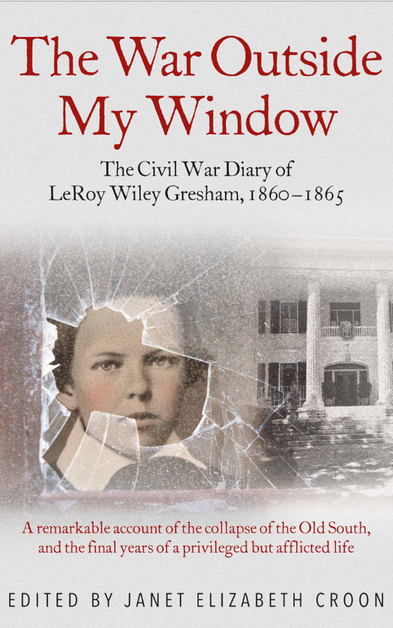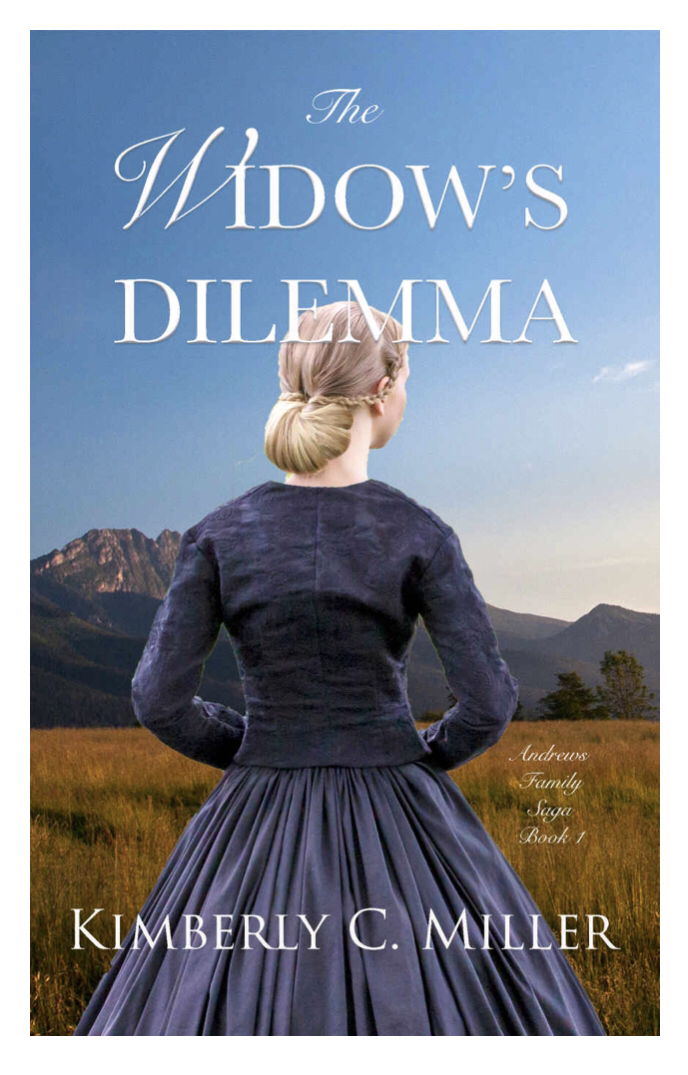|
Sam Burnham, Curator @C_SamBurnham To listen to the podcast episode featuring an interview with editor Jan Croon, click here.  "The War Outside My Window - The Civil War Diary of LeRoy Wiley Gresham, 1860-1865" Edited by Janet Elizabeth Croon, Published by Savas Beatie "The War Outside My Window - The Civil War Diary of LeRoy Wiley Gresham, 1860-1865" Edited by Janet Elizabeth Croon, Published by Savas Beatie I am thankful to have had the opportunity to take a look at at such an intriguing work. Only a day after my review copy shipped, a family friend recommended the book pointing out she's a cousin of the author. This is a published diary meaning that, in this case, the author has died and the published work has been completed by an editor who compiled the diary and tried to make it relevant and readable for a modern audience. This puts an effective editor in the position of researcher, dot connector, notation maker, and even translator. The author, LeRoy Wiley Gresham, was 12 years old when he began his diary in 1860. Gresham was a particularly bright young man. He was already an adept writer showed an interest in many subjects, including the gathering clouds of the ominous war to come. The Greshams were an educated family who were among the wealthy of Macon's populace. LeRoy was afflicted with a condition of the spine that left him bedridden. Instead of many of the activities common to other boys his age (which could have included service among the Confederate military ranks) he became an avid reader. He documents the news of each day including reports from the battlefield, from politics, and typically a report of the day's weather. Occasionally an entry might be nothing more than a weather report from the day. in other entries, such as late September, 1863, he relays news of major developments in the war. If you know the names and dates, you know what to expect from the events. But you find yourself interested to read how he reports it. You can see Gettysburg, Chickamauga, Peachtree Creek, and Atlanta, long before they happen. But to see it in the eyes of a young man standing in the path of Sherman's advance gives you a taste of what it must have been like to be standing there yourself. I can imagine that for a person who does not know the specific names and dates, this narrative makes for a great story a first time learner will get caught up in. I was amazed to see how quickly the news traveled then. Reports from battles were often given by the next day, although much of the information was wrong. Casualty numbers and specific people reported dead were wildly inaccurate and he often added corrections as he received new information. He reports Hood killed at Chickamauga, then maybe not dead, then not dead but having lost his leg. The corrections also included the death of Peyton Colquitt, a relative of Gresham's who has been mentioned here before. LeRoy's fortunes seem to track the Confederacy's. At first he has a life of wealth and privilege. Without giving away too much, the family's fortunes, and LeRoy's health, take a dramatic turn in the famine left in Sherman's wake - much like the fledgling nation's. LeRoy's fate and the Confederacy's seem to be metaphorically tied to each other. As for the editing, Janet Elizabeth Croon took a diary from the 1860's with the intent of presenting it to a modern audience. I mentioned "translator" as one of the hats she had to wear. Gresham uses many abbreviations and terms that were familiar to him but that the casual reader might not understand. Carefully added text fills in the gaps between his familiarity and the reader's curiosity. It makes for a seamless read that is easily understandable in 2018. There are extensive footnotes to help the reader understand historic, cultural, familial, and medical terms or allusions. It is evident that Croon put a lot of work into research, documentation, and gathering information that she probably had to learn herself as she went. The notes are so impressive that it pains me to point out there are a very few inaccuracies (ex: 20 May 1864 when Rome, GA is evacuated, our army was at Kingston, GA, not NC). The errors are so rare and minimal and that one so close to home that it caught my attention. Such minimal errors are understandable when the weight of the notes are considered. She did a fantastic job. One of the best things about this book is it puts a first-hand account of the era, and the war specifically, in a form that makes it accessible to an everyday reader. This is a serious historical document that the average person in 2018 can understand. You don't have to be a Civil War scholar or even a historian to appreciate it or enjoy it. The human story involved, the struggle of a youngster who learned to deal with the specter of death at an early age before having to confront his own frail mortality, is touching. In an age where anything Confederate is to be hated and scorned, Gresham reintroduces the humanity of the Southern people into the conversation. He's not a statue or a flag, hes a young boy facing a harsh world and it is easy to become sympathetic to him. Croon does a good job of steering away from bias on either side and presenting only the facts and letting LeRoy tell his first-hand story. And I enjoyed reading it.
1 Comment
7/31/2018 11:57:48 am
Thank you for the review of “The War Outside My Window" and the podcast interview with Jan Croon. We appreciate your review and interview and are glad to hear you enjoyed the book! Those interested in checking out this book can read more at the Savas Beatie website here: https://tinyurl.com/y7ygvcvh
Reply
Leave a Reply. |
Sam B.Historian, self-proclaimed gentleman, agrarian-at-heart, & curator extraordinaire Social MediaCategories
All
Archives
November 2022
|




 RSS Feed
RSS Feed
